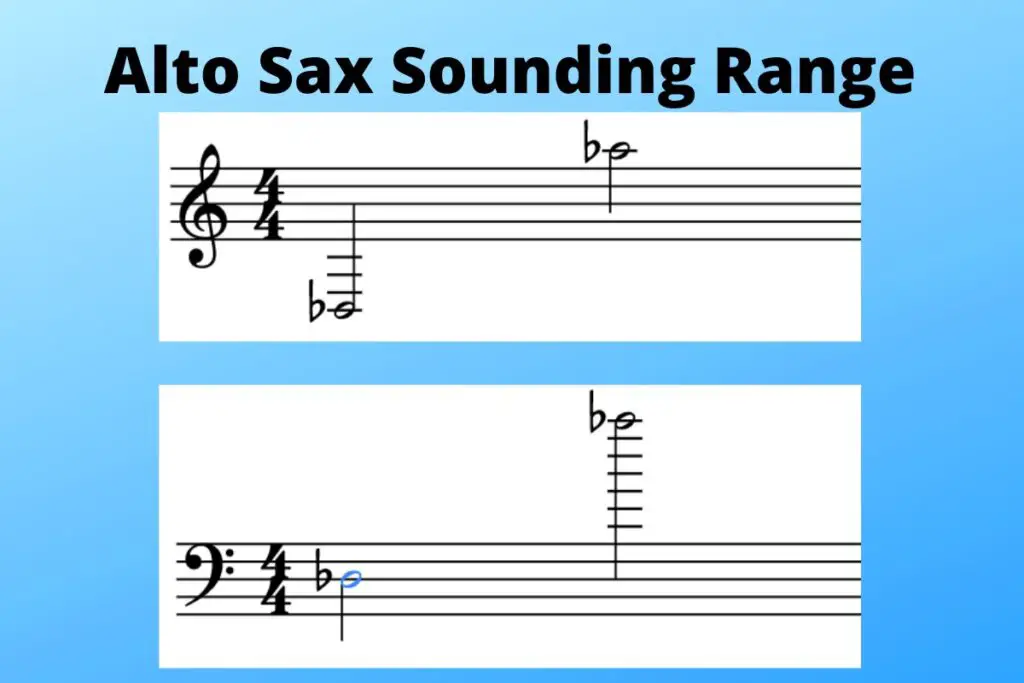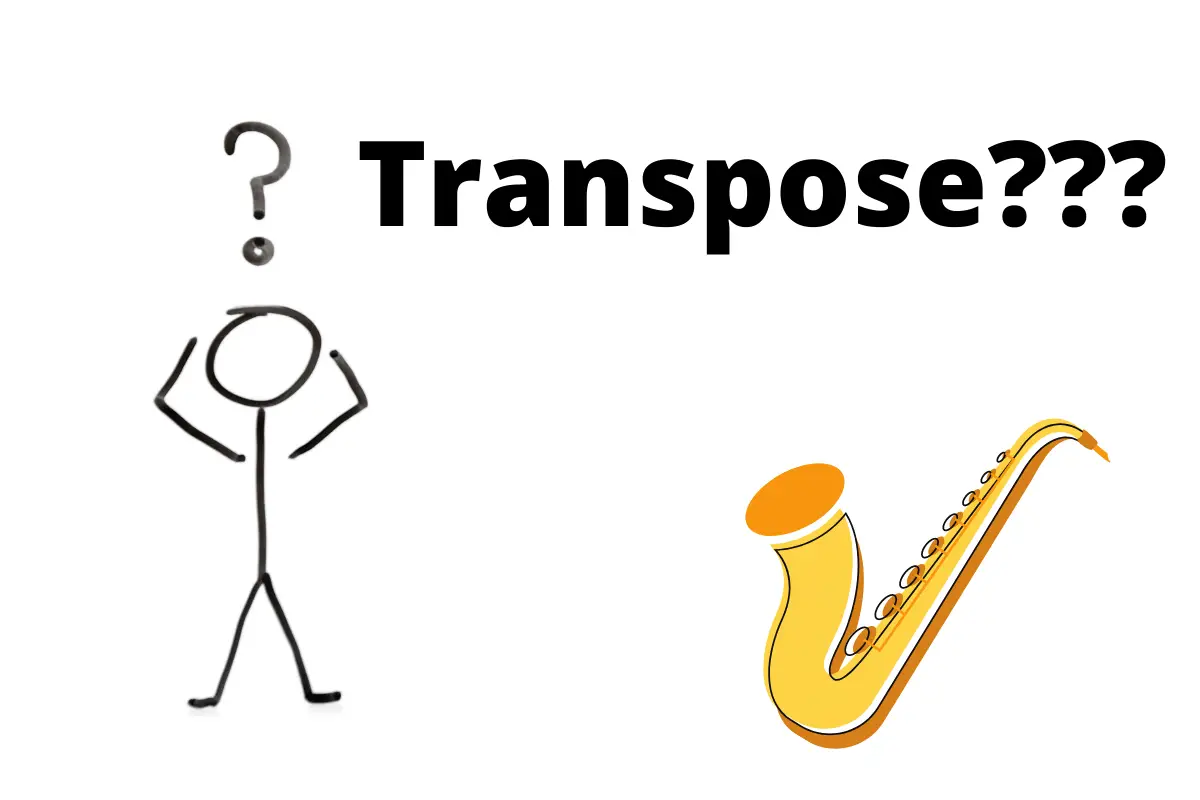Transposing instruments are one of the hardest things for people to grasp.
Why does an instrument read different music than what it actually sounds?
It may seem silly, but there are good historical and modern reasons for transposing, and the saxophone is one of these instruments.
So I wanted to answer your common question: Why are saxophone transposing instruments?
Saxophones are transposing instruments to make switching between the types of saxes easier without learning new fingerings. It also makes the music easier to read as reading notes in their actual range would result in having to read many ledger lines above or below the staff.
Keep reading to check out the historical reasons behind transposing and how it works with saxophones.
Are you confused about the types of the most popular saxes? Check out our detailed comparison of tenor vs. alto sax.
Table of Contents
What Does It Mean To Be A Transposing Instrument?
Transposing instruments don’t play the same notes they read.
When they finger and read a note and then play it, the sounding note is different.
Let’s look at the alto sax quickly for an example.
The alto is an Eb instrument, which means when it fingers a written C, it plays an Eb.
For non-musicians, this seems absurd, and even for many musicians, it feels extra.
But there are some great reasons, both in history and the modern-day, this sticks around.
Reasons For Transposing Instruments In History
Hundreds of years ago, before the saxophone, many brass instruments could only play a limited number of pitches.
This was in the days before valves and keys.
To play different notes to match the piece being played, they’d switch out their lead pipe to change the length of their instrument and play the other notes.
But to make it easier on the musicians, they’d keep the notes looking the same.
This would make it simpler for them to just switch out their pipe and play rather than switching and reading all of the notes.
As valves and other instruments came into play, composers wrote some of the instruments as transposing to make it easier for musicians to switch between them without relearning all the fingerings.
The modern British brass bands and Salvation Army bands are great examples.
Most musicians have one instrument they specialize in, and it’s often one of the higher-pitched instruments.
So if your group needs some tubas or bari saxes and you don’t have the players, what do you do?
These groups write their music as if it was all written for one type of player. Then you play and finger the same for all your instruments, and your skilled musicians can pick up anything and help you out.
Why Are Saxophones Transposing? What Are The Benefits?
Saxophones, being a much younger instrument, piggy-backed off many trends from the brass family and clarinets.
Saxophones don’t switch out lead pipes or anything, but they want to make it, so you don’t switch fingerings and reading for each instrument.
So by making them transposing instruments, now we can switch from bari to tenor to alto to soprano without learning new fingerings.
The only thing you have to adjust is your air and embouchure.
Head on over to our tips for tenor vs. alto sax embouchure.
Transposing also adjusts the range of the notes to better fit within the staff.
If an alto has a sounding range of concert pitches of Db3 to Ab5, then it would look like one of these two options in treble or bass clef if it weren’t a transposing instrument.

Looks messy, right? Shifting the written pitch and transposing makes it much easier to read for the range the saxophones tend to play in.
How Do Saxophones Transpose?
There are two types of keys the saxes play in Eb and Bb.
The alto and baritone saxophones are Eb or E-flat saxophones.
The soprano and tenor saxophones are Bb or B-flat saxophones.
What does this mean for reading the music?
Let’s take it one by one.
For Eb instruments (like the alto), you shift whatever note you’re reading or fingering up by a minor third.
So if they finger a C, it sounds like an Eb.
Check out this conversion chart for altos and bari saxes.
| Written Pitch/ Fingered Note | Sounding Pitch (Concert Pitch) |
| C | D#/Eb |
| C#/Db | E |
| D | F |
| D#/Eb | F#/Gb |
| E | G |
| F | G#/Ab |
| F#/Gb | A |
| G | A#/Bb |
| G#/Ab | B |
| A | C |
| A#/Bb | C#/Db |
| B | D |
For Bb instruments (like the tenor), you shift whatever note you’re reading or fingering down by a major second or whole step.
So if they finger a C, it sounds like a Bb.
Check out this conversion chart for soprano saxes and tenors.
| Written Pitch/ Fingered Note | Sounding Pitch (Concert Pitch) |
| C | A#/Bb |
| C#/Db | B |
| D | C |
| D#/Eb | C#/Db |
| E | D |
| F | D#/Eb |
| F#/Gb | E |
| G | F |
| G#/Ab | F#/Gb |
| A | G |
| A#/Bb | G#/Ab |
| B | A |
List Of Common Transposing Instruments
Here’s a quick list of the common transposing instruments you may come across:
- Clarinet
- Saxophone
- Trumpet
- French horn
- Euphonium (if read in treble clef)
- Alto flute
- English horn
- Tuba (if read in treble clef as in some brass bands)

